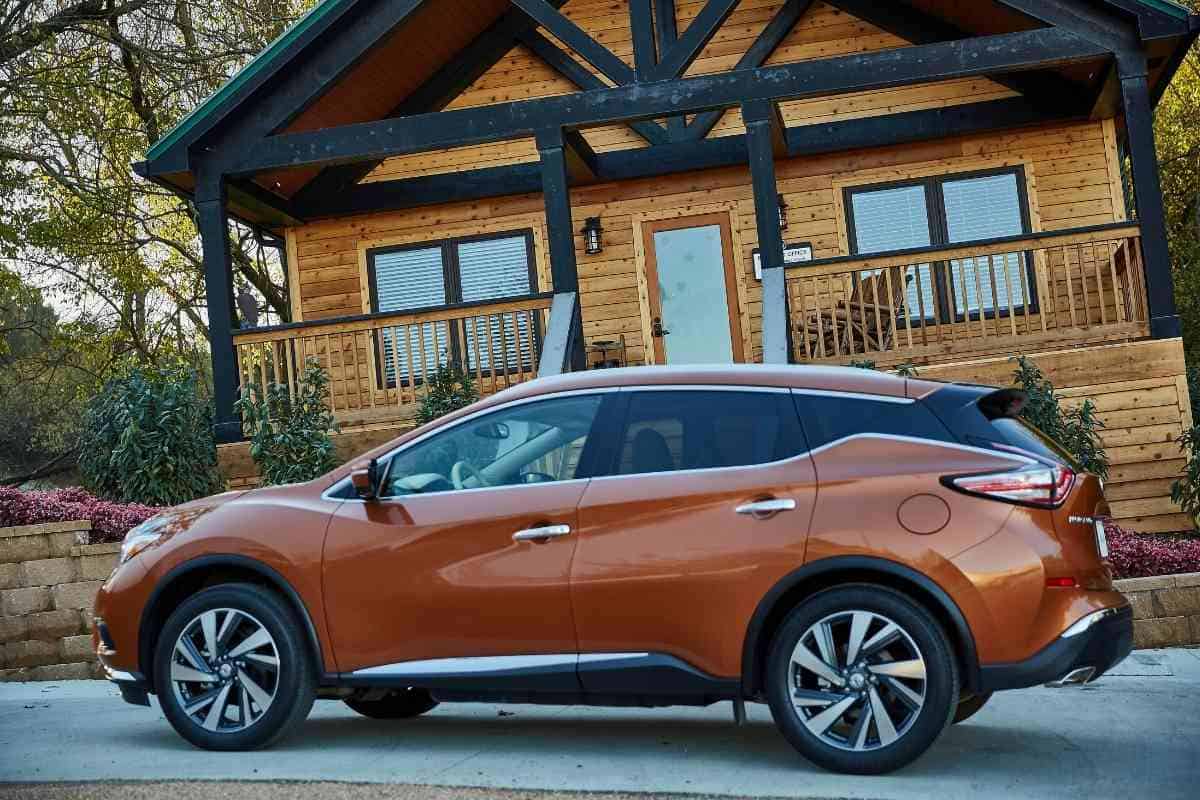6 Reasons Your Nissan Murano Won’t Accelerate (And What To Do)
Drivers find it annoying when their Nissan Murano will not accelerate while driving. So, what causes a Nissan Murano not to accelerate? What causes Nissan Murano not to accelerate? Does the cause require a repair or replacement? What common areas to check in the Nissan Murano if it does not accelerate? What are some ways of repairing the parts or components that make the vehicle not accelerate?

Why won’t my Murano accelerate?
The most frequent reasons for Nissan Murano’s poor acceleration include a filthy mass air flow sensor (MAF), a dirty air filter, a dirty fuel filter, a broken oxygen sensor, a blocked throttle body, and old and worn-out spark plugs, dirty catalytic converter, and defective ignition coils.
This article will take an in-depth study of the reasons or causes that makes a Nissan Murano not accelerate and whether it requires a repair or replacement.
It will also cover the common areas of the vehicle to check when acceleration does not work and the solutions to fix such problems. If your Nissan Murano has an acceleration problem and you are wondering what causes and how to fix it, then this article will guide you on this.
Overview
At some point in life, vehicles may break down or get damages that will require monitoring and fixing. For instance, when it comes to the problem with acceleration, the engine is one of the most important things to check.
This is because the fuel and air must be precisely balanced for a combustion engine to operate well. If there is any deviation from this combination, the engine may run too lean, creating insufficient air or fuel.
The combination of air and energy, which is excessively lean, is most likely to cause an engine’s hesitation when accelerating.
When a motor operates inefficiently, it will start to exhibit hesitancy symptoms that require monitoring. It is advisable to check the vehicle immediately if one detects any signs of engine hesitation.
Reasons why Nissan Murano will not accelerate
The following are some of the common reasons that make the Nissan Murano not to accelerate while driving:
Damaged MAF Sensor
The Nissan Murano may experience power loss, uneven engine operation, erratic idling, misfires, and poor exhaust emission values if the MAF sensor is damaged or unclean. The MAF sensor is crucial for Murano’s power delivery and the least pollution emissions.
If the MAF sensor fails to transmit accurate measured data to the Murano’s control unit, it is damaged r becomes filthy. On the Murano, the unit of control of the engine may receive progressively erroneous information as the mileage rises.
A faulty MAF sensor should be considered if there is a pronounced performance loss and high mileage. The sensor may, however, have an earlier malfunction, thus making it possible for water to occasionally flow past the air filter when driving quickly in a downpour.

Clogging of the Fuel Filter
When the fuel filter is blocked with dirt, insufficient fuel may flow to the engine, and as a result, the vehicle loses power and jerks when accelerating. The worst-case scenario involves an engine cutout while one is driving from a lack of fuel.
If this occurs, the Murano control unit can identify the fuel issue, and the engine inspection light will switch on. When you attach an obd2 scanner to the car, one receives the error number poo87, which denotes a problem with the fuel delivery system. The purpose of the fuel filter system is to stop rust and other contaminants from the fuel tank of the car from entering the motor, where they could cause damage.
Clogging of the Catalytic Chamber
The catalytic chamber, a component of the Nissan Murano exhaust system, transforms polluting gasses into less harmful pollutants.
The catalytic converter becomes clogged with contaminants over time, especially if the car has logged a lot of kilometers. The everyday things to note are the engine running unevenly, an odd exhaust gas smell, low fuel economy, an illuminated engine check light, and occasionally rattling noises.
Although several elements can alter the lifespan of the converter, it can last around 100,000 kilometers. However, the worn-out can occur considerably more quickly due to other issues such as engine misfires, poor air-fuel ratios, and malfunctioning oxygen sensors, among other issues.
Unclean Throttle Body
Another factor that can cause a lack of acceleration in the vehicle is a dirty throttle body. It may lead to poor engine performance, erratic car idling, a slow response time when applying the accelerator, and sputtering or stalling.
Internal pollution and contamination can make the throttle body malfunction, where the throttle valve controls the internal combustion engine’s air supply. The accumulation of dirt and grime that passes via the filter may cause the throttle body to move improperly, interfering with the air supply regulation.
Unclean Fuel Injectors
The fuel delivery system uses fuel injectors to spray fuel into the vehicle’s engine. Because of the presence of hydrocarbons, silt, and other components in the energy, they may eventually become clogged and dirty.
In such a case, the correct amount of fuel cannot be supplied in the fuel tank at the appropriate pressure. This leads to slow acceleration, rough idling, uneven engine performance, higher fuel consumption, engine hesitation, and misfiring.
Flat Tire and Low Fuel
The primary causes that can make the Nissan Murano not accelerate can be a tire puncture or low fuel in the tank.
If the vehicle refuses to accelerate, the first thing is to check if the car has a flat tire or low fuel. The engine requires enough fuel to produce the energy needed for acceleration and enough pressure on the tires to enable the vehicle to move without any resistance.
Fixing a Nissan Murano that is not Accelerating
It is necessary to take the vehicle for regular servicing to ensure that the Nissan responds when accelerating. If the cause is dirty injectors, cleaning the fuel nozzle with a fuel additive will improve the injection behavior.
However, one must confirm that the chosen injection system cleanser is authorized before using it in the Nissan Murano. Additionally, ensure that the throttle body is clean of dirt and grime to prevent from depositing gasses that will interfere with the supply of air.
Additionally, the catalytic chamber needs to be cleaned or changed when it wears out to avoid clogging the combustion chamber.
Other reasons that may need to be fixed include repairing a flat tire, ensuring that the Nissan Murano has got fuel, checking if the battery is still functional, and improving the oxygen sensor when it gets damaged or broken.
Wrapping it Up
Vehicle acceleration may end up damaging some critical components of the vehicle if the necessary caution is not taken.
The simplest way to fix the lack of acceleration in Nissan Murano is to narrow down the problem’s diagnosis because each scenario has its section of probable reasons.
The primary things to do are confirm if the engine control unit is on, buy a code scanner and see what code is in the computer system. This will assist you in identifying the potential source of the problem and help in finding an ideal solution.

No codes,idle fine even accelerates,only in drive,poor power and acceleration.
The only comment I would like to leave is a Huge “Thank You”.
“Thank You” for sharing your Knowledge and Insight with people like me who desperately need it.
God Bless
Thank you